Invisalign® for Teens
New Patients
(732) 813-3564
Existing Patients
(732) 639-3495

We are a Certified Invisalign Provider
An innovative, discreet, and effective system of care, Invisalign® treatment offers a cosmetic way to align your smile with minimal interference to daily activities.

Invisalign® for Teens

Invisalign® for Brides

Invisalign® for Travelers
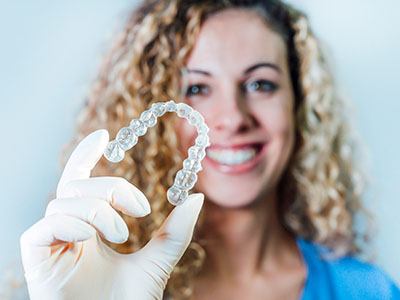
Before & After Photos
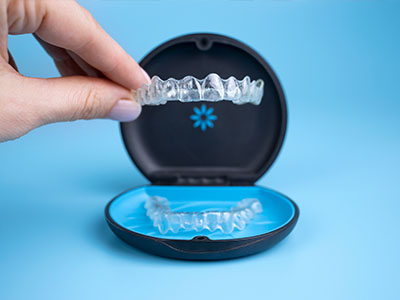
Invisalign® Videos
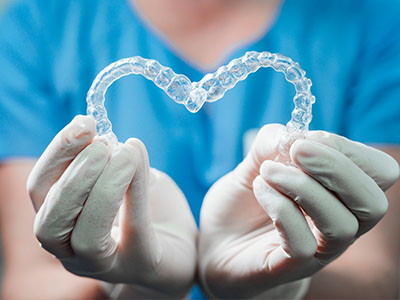
FAQs
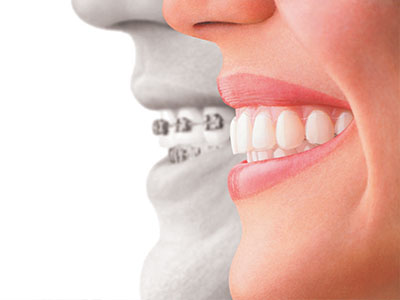
Invisalign® vs Braces
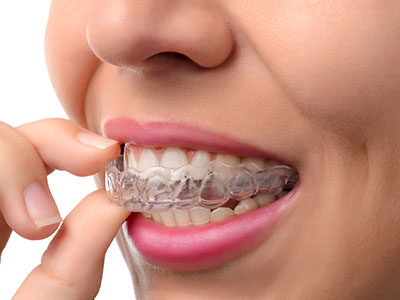
Invisalign® vs Direct-To-Consumer Aligners
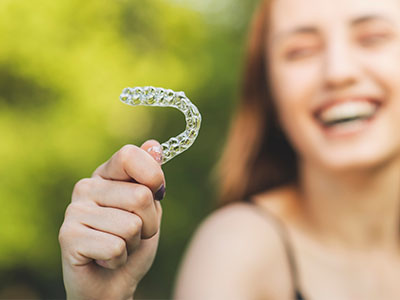
Is Invisalign® Right For Me?
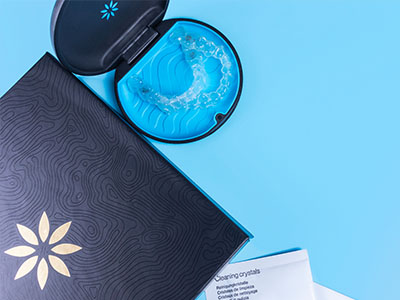
Invisalign® Costs
With aligners that are practically invisible, only you will know that you're undergoing orthodontic care!
Invisalign® utilizes 3-D computer imaging technology to correct problematic bites or malocclusions by planning a complete sequence of custom-made clear aligners. This series of clear aligners incrementally move the teeth into place until the final desired corrections are reached.
As pioneers in the field of aligner development and technology, the folks at Align Technology, Inc. gather data from millions of treated smiles to design treatment systems that:
Custom-made to the exact specifications of your smile, Invisalign® clear aligners are designed to incrementally move your teeth into their correct positions over time. Simply swap-out last week's aligner for the next one in the series and watch as your smile progressively shows signs of improvement.
And, because Invisalign® clear aligners are removable for short periods of time, you can still enjoy the foods you love as well as brush and floss your teeth with ease!
Remember, a beautiful smile begins today! Contact our office for more information and to schedule a consultation for care.

Your doctor will examine your teeth and show you what Invisalign® treatment can do for you.
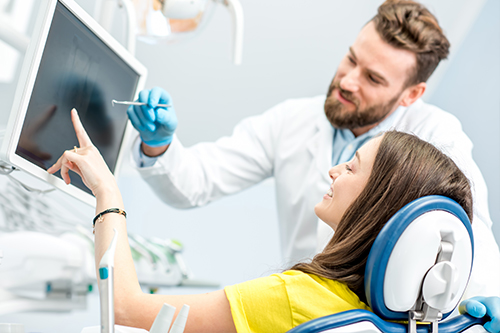
Start with a fast, precise digital scan. Then your doctor will map out a custom treatment plan just for you. You will even get a preview of your smile.
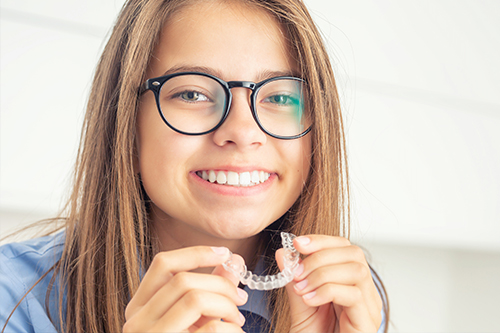
Your clear aligners are created using industry leading technology based on your customized treatment. Your aligners are created with comfort in mind.

From the first day of treatment to the last, you're never on your own — your doctor will be with you every step of your way.
Explore the true stories and journeys of several Invisalign® patients
*Invisalign® is a registered trademark of Align Technology, Inc.
There are many options for patients who want to avoid metal braces! The most popular alternative orthodontic treatment is Invisalign®, which are clear plastic aligners designed to straighten teeth. After an examination of your teeth, your dentist will determine which option is best suited to your wants and needs.
According to the Invisalign® website, the cost for treatment is approximately the same as the cost for metal braces. A portion of this cost may be covered by your insurance. Please call us to set up a consultation and discuss potential payment plan options.
The first step is to schedule a consultation with your doctor, so they can devise a treatment plan that is best suited to your individual dental needs. Once approved, you will receive your first set of aligners. Your doctor will then regularly monitor the movement of your teeth and new aligners will be ordered according to the progress made in your treatment plan.
Invisalign® aligners are made of clear, flexible plastic. The company received a patent for this material – SmartTrack® – to be used exclusively for Invisalign treatment purposes. These aligners are FDA approved and nearly invisible!
Your doctor will give you an estimate regarding how long your Invisalign® treatment should take, which will depend on your specific needs. The average length of time for treatment is approximately 12-18 months. However, some patients may see results far sooner. Remember to wear your aligners exactly as instructed by your doctor to obtain the best results.
Your doctor will most likely recommend that you wear retainers following your Invisalign® treatment. This is a precaution that will prevent your teeth from shifting back to their original positioning. It is important to follow your doctor's instructions exactly to ensure long-lasting results.
You must wear your aligners for up to 22 hours daily. You may remove them for eating, drinking and regular oral hygiene.
No. Unlike braces, you may eat whatever you like as long as you remove the aligners before eating. Prior to placing the aligners back on, it is important to brush your teeth and the aligners after you eat.
Like any orthodontic treatment, there is a short adjustment period. The more you speak with the aligners on, the quicker you will adjust.
There will be some pressure and minor discomfort for a day or two after each initial insertion. This is a sign that your teeth are moving sequentially into their final position.
It is recommended that you remove your aligners prior to chewing gum as the gum will stick to the aligners.
We discourage smoking with aligners as the cigarette smoke will tend to discolor them.
Brushing them with toothpaste will keep them fresh and clean.
Regular office visits are every five to six weeks. This will ensure that your Invisalign treatment is progressing as planned.
All orthodontic patients are instructed to wear their retainers at night indefinitely. Sleeping with your retainers in at night will ensure a healthy bite and maintain the new position of your teeth.
Yes, if their teeth, including second molars, have grown in completely.
Invisalign® is a clear aligner system that gradually moves teeth into improved positions using a series of custom-made, removable trays. Treatment begins with a precise 3-D digital scan of your teeth, which is used to plan each stage of movement and to fabricate the aligner sequence. The technology allows your dental team to preview the projected outcome and adjust the plan for predictable results.
Each aligner is worn for a prescribed period before being replaced by the next in the series, and small adjustments in each tray apply gentle, controlled forces to move teeth. Because the trays are removable, patients maintain normal eating and oral hygiene routines while progressing through treatment. Regular checkups with your dental provider ensure the treatment stays on track and any refinements are addressed promptly.
Good candidates for Invisalign® typically have mild to moderate alignment concerns such as crowding, spacing, certain bite issues, or rotated teeth that can be addressed with aligner movements. A comprehensive exam and digital scan by a dental professional determine whether aligners are the best approach for the individual’s oral health and treatment goals. Patients with active gum disease, significant tooth loss, or complex skeletal problems may require alternative or adjunctive treatments first.
Commitment to wearing aligners as instructed and attending scheduled checkups is essential for success, so candidacy also depends on patient cooperation. Teenagers and adults can both be suitable candidates when growth, oral health, and compliance are evaluated. Your dentist will review your medical and dental history to tailor a safe, effective plan for you.
Duration of Invisalign® treatment varies depending on the complexity of the case, the number of movements required, and patient adherence to the prescribed wear schedule. Many mild to moderate cases can be completed within several months to a year, while more complex corrections may take longer. The initial digital treatment plan provides an estimated timeline that your provider will review with you.
Consistently wearing aligners for the recommended daily hours and following replacement timing helps keep treatment on schedule and can prevent delays. Periodic appointments allow your dental team to monitor progress and make any necessary adjustments to the plan. Maintaining good oral hygiene and reporting any issues with fit or comfort helps avoid interruptions in treatment.
During a consultation at Elegant Dental Arts in Freehold, NJ, your dentist will perform a thorough oral exam, review digital scans or impressions, and discuss your smile goals and medical history. The team will explain how Invisalign® works, show a projected treatment plan, and outline what types of tooth movements are anticipated. This visit is an opportunity to ask questions about the process, expected timeline, and any lifestyle considerations.
If Invisalign® appears to be a suitable option, the practice will collect precise digital records to create a customized aligner sequence and schedule follow-up appointments. Your dentist will also review care instructions, wear-time expectations, and how progress will be monitored. Clear communication at this stage helps set realistic expectations and supports a successful outcome.
Proper care of aligners and teeth is crucial for effective Invisalign® treatment and overall oral health. Aligners should be removed for eating and drinking anything other than plain water, then rinsed and cleaned gently with a soft brush or manufacturer-recommended cleaner before reinserting. Storing aligners in their case when not in use prevents loss or damage and reduces exposure to bacteria.
Brushing and flossing after every meal before reinserting aligners helps prevent food particles and plaque from becoming trapped against the teeth. Routine dental cleanings and exams remain important during treatment to monitor gum health and tooth stability. If you notice discoloration, persistent odor, or a poor fit, contact your dental provider to address the issue promptly.
Most patients experience minimal and temporary speech changes when they first begin wearing aligners as the mouth adjusts to the new appliance. Any lisps or altered pronunciation typically resolve within a few days to a couple of weeks as you become accustomed to the aligners. Taking time to practice speaking, reading aloud, or repeating difficult sounds can speed up the adaptation period.
Because the aligners are thin and custom-fit, they generally have little impact on daily activities and allow patients to continue usual eating, social, and professional routines with discretion. Aligners are removed for meals, sports that require a mouthguard, and special events when desired. Your dentist can advise on strategies for managing short-term adjustments and maintaining comfort throughout treatment.
Follow-up visits during Invisalign® treatment are typically scheduled every four to eight weeks, depending on the specific treatment plan and the doctor’s protocol. These appointments allow your dental team to verify that teeth are tracking as planned, to address any concerns, and to provide the next sets of aligners when appropriate. More frequent visits may be recommended if refinements or attachments are needed to achieve targeted movements.
Between scheduled visits, your dentist remains available for questions about fit, comfort, or unexpected events such as a misplaced aligner. Routine preventive care visits including cleanings continue on a schedule determined by your oral health needs. Maintaining these appointments supports both treatment success and overall dental wellness.
Invisalign® can address a wide range of orthodontic issues, including mild to moderate crowding, spacing, certain types of overbite, crossbite, and rotated teeth. The system is effective for many tooth movements when attachments and auxiliary features are used to enhance control. Complex skeletal discrepancies and certain severe bite problems may require traditional orthodontics or combined surgical and orthodontic approaches.
Diagnosis and treatment planning are based on a detailed clinical evaluation and digital records to determine whether aligners can safely and predictably achieve the desired outcome. When appropriate, Invisalign® can be integrated into multidisciplinary care to coordinate with restorative, periodontal, or surgical treatments. Your dentist will explain the realistic scope of correction for your unique situation during the consultation.
Invisalign® is appropriate for many teenagers and adults, and specific products are designed to meet teen needs such as eruption compensation features. The key considerations are dental development, oral health, and patient compliance with wear-time requirements. For younger patients whose permanent teeth are still erupting, an evaluation will determine the optimal timing for starting aligner therapy.
Adults of virtually any age can be candidates when their gums and supporting bone are healthy, and any active disease is managed before beginning alignment. Treatment can improve both function and esthetics for mature smiles, and collaborative planning with your dental team ensures a safe approach. The dentist will assess individual factors to recommend the best timing and appliance for treatment.
Invisalign® can be coordinated with restorative, periodontal, and implant treatments to achieve both functional and esthetic goals. For example, alignment may be planned to create ideal spacing for crowns, veneers, or implant placement, and the sequence of care is determined to protect gum health and tooth integrity. Close communication between specialists and your general dentist ensures that orthodontic movement supports long-term restorative outcomes.
When combined care is indicated, your provider will map the overall treatment timeline so that orthodontic and restorative phases complement each other. Temporary restorations or alteration of attachments can be used to optimize the final result. Your dentist will explain how aligner therapy fits into your comprehensive treatment plan and coordinate follow-up care accordingly.

